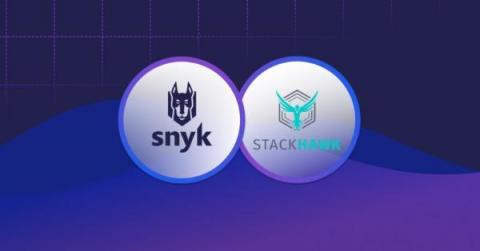Security | Threat Detection | Cyberattacks | DevSecOps | Compliance
AST
On the Fuzzing Hook - Exploring Deeper Program States
Coverage-guided fuzzers, like Jazzer, maximize the amount of executed code during fuzzing. This has proven to produce interesting findings deep inside the codebase. Only checking validation rules on the first application layer isn’t providing great benefits, whereas verifying logic in and interactions of deeply embedded components is. To extend the amount of covered code, the fuzzer tries to mutate its input in such a way that it passes existing checks and reaches yet unknown code paths.
Snyk and StackHawk form strategic alliance to equip app teams with modern, developer-first security testing
Application innovation, design, development, quality assurance, and security testing have changed dramatically over the past decade. Engineering teams are leveraging agile development processes, modern cloud platforms, reusable microservices, and extensible APIs, enabling them to shift to more frequent deployments more easily.
Synopsys to expand portfolio, SaaS offerings with WhiteHat Security acquisition
Veracode Named A Leader In The 2022 Gartner® Magic Quadrant For Application Security Testing For Ninth Consecutive Time
Reduce risks of data breaches throughout your development lifecycle with the new Bearer GitHub Action
Bearer is a Static Application Security Testing (SAST) tool that enables security and engineering teams to identify and mitigate data security risks throughout the software development lifecycle. It integrates with Source Code Management (SCM) software (see Git repository integrations for more details) to scan your code repositories, discover and classify data flows, and detect gaps with your data security policy.
Modernizing SAST rules maintenance to catch vulnerabilities faster
Snyk Code separates itself from the majority of static code analysis tools by generating and maintaining rule sets for its users — helping them combat common and newly discovered threats. A recent Hub article described a new Javascript vulnerability called prototype pollution, which allows attackers to modify, or “pollute”, a Javascript object prototype and execute a variety of malicious actions.
Snyk and StackHawk: How to Get Started (SAST and DAST)
CI Fuzz Demo | Security Testing Made for Developers
How To Set A Benchmark Of False Positives With SAST Tools
Many Static Application Security Testing (SAST) tools struggle with false positives. They often report that a vulnerability is present, while, in reality, it does not exist. This inaccuracy weighs down the engineering team, as they spend productive hours triaging the false alarms. By setting a benchmark of false positives — a limit, above which is unacceptable — you can establish a point of reference or standard against which to measure the efficacy of your SAST tool.











